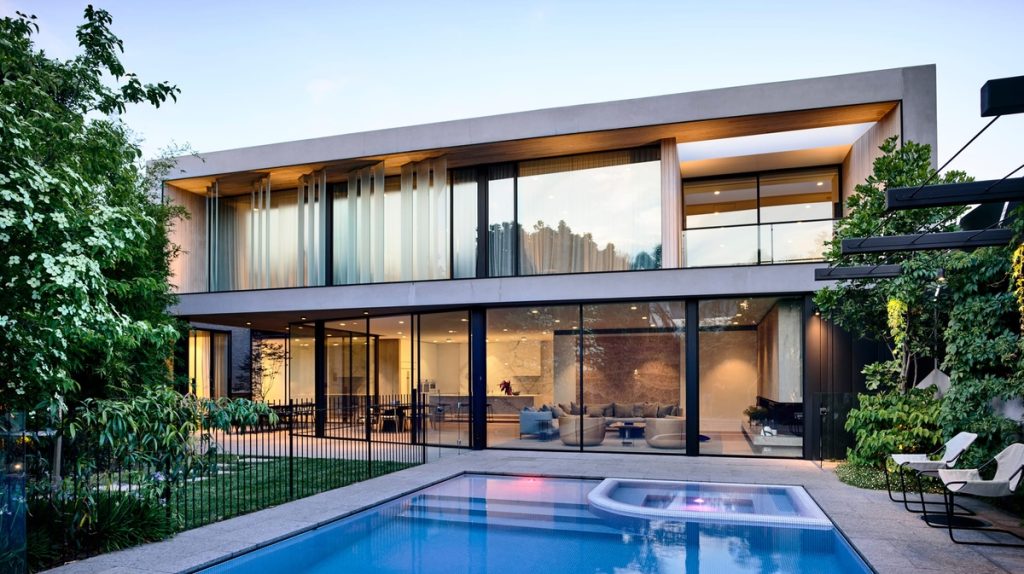Double vs. Secondary Glazing: Which One is Better for Your Home?
For homeowners living in noisy urban or suburban areas, the question of whether double glazing or secondary glazing makes a bigger difference is critical. In Australia’s climate, where hot summers and cold winters are common, reducing heat loss, cutting noise, and improving comfort can significantly offer an enhanced quality of life. In simple terms, double glazed products provide superior thermal insulation and long-term energy savings, while installing secondary glazing on your windows and doors can offer a new, cost-effective, non-intrusive solution that works well for certain applications.
Understanding how these two glazing options for windows and doors differ will help you make a smarter investment in your property’s comfort, value, and energy efficiency.
What is Double Glazing? Benefits, Costs & Downsides Explained
Double glazing involves replacing your existing windows and doors with a double-glazed product, consisting of two panes of glass separated by a vacuum or argon gas layer, sealed within the window or door frame. This design significantly reduces heat transfer and external noise, while improving year-round energy performance.
Benefits of double glazing windows and doors include:
- Reducing external noise by up to 80 percent
- Lowering heat transfer by up to 70 percent
- Saving up to 20 percent on your energy bills
- Increasing property value through improved energy ratings
- Enhancing security and reducing condensation on your windows and doors
Double-glazed windows and doors provide long-term comfort and are widely considered Australia’s new, most effective home insulation upgrade after underfloor insulation.
In terms of costs, double glazed products are a substantial investment. Expect:
- $700 to $1,500 per window, depending on the size of your windows or doors, and glazing specifications
- Full home upgrades ranging between $12,000 and $30,000
The main downsides are the higher upfront price and the fact that installation of your double-glazed products requires the removal and replacement of your existing window and door systems. However, in homes where comfort and efficiency are priorities, double glazing offers undeniable advantages.
What is Secondary Glazing? Advantages, Costs & Downsides Explained
Secondary glazed products are retrofit systems that add a secondary glass or acrylic panel to the inside of your existing single glazed windows and doors. It is often seen as the best alternative to double glazed products, particularly in heritage homes or properties where replacing windows and doors isn’t permitted.
Advantages of installing secondary glazing include:
- Quick and easy to fit over any existing windows and doors, from sliding to hinged
- Lower cost than double glazing
- Minimal structural disruption to your home
- Suitable for windows and doors in heritage or listed properties
- DIY secondary glazing product kits available for basic installations
However, secondary glazing is less effective than double glazing when it comes to reducing heat loss and improving energy efficiency. Costs typically include:
- $250 to $450 per window or door for professionally installed products
- DIY product kits starting from around $150 per window or door
Downsides involve:
- Less thermal insulation compared to double-glazed windows and doors
- Condensation issues may develop between the original and secondary panes on your windows and doors
- Cleaning is more complex due to the four-glass surface design involved
Secondary glazing is the best lower-cost solution for noise reduction and modest energy improvements, but it lacks the comprehensive benefits of professionally installed double-glazed windows and doors.
Insulation Comparison: Which Glazing Keeps Heat In More Effectively?
When comparing thermal insulation performance, a double glazed product is clearly more efficient than fitting secondary glazing.
Double glazing design uses sealed, argon-filled units or vacuum spaces between panes on your windows or doors to block heat transfer, providing:
- Up to 70 percent reduction in heat transfer
- Year-round temperature control: cooler in summer and warmer in winter
- Reduction in energy costs by up to 20 percent
Secondary glazing relies on an air gap, without the benefit of a sealed unit, delivering:
- Around 30 percent improvement over single glazed windows and doors
- Moderate improvements in comfort energy efficiency
- Less effective barrier against heat loss and heat gain
For Australian homeowners looking to maximise savings on their energy bills, double glazed windows and doors are the recommended solution. They actively help retain warmth during winter and reduce reliance on air conditioning products during summer, making them a new and better long-term investment.
Noise Reduction Battle: Does Double or Secondary Glazing Block Sound Better?
Both glazing options help reduce external commotion, but the difference lies in the effectiveness of each solution.
Double glazing:
- Double glazed windows and doors reduce noise transfer by up to 80 percent
- They offer consistent soundproofing through professionally sealed units
- Ideal for properties near airports, highways, or noisy neighbourhoods
Secondary glazing:
- Secondary glazed windows and doors reduce noise by up to 60 percent
- Can outperform double glazed products if fitted with a large air gap (up to 200mm)
- Performs best with laminated glass and professional installation
While secondary glazing systems create two independent barriers that may disrupt sound transmission effectively, most homeowners experience the highest reduction in everyday racket using modern double glazed glass windows and doors.
For those prioritising sound insulation and wanting to cut noise by 80 percent without moving house, double glazing your windows and doors is the best option that makes the biggest difference.
Double vs. Secondary Glazing Costs: Installation, Savings & Value Compared
A key decision factor for many homeowners is cost. Secondary glazing is more affordable upfront, but double glazing will offer greater long-term savings.
|
Aspect |
Double Glazing |
Secondary Glazing |
|
Cost Per Window |
$700–$1,500 |
$250–$450 |
|
DIY Option |
No |
Yes |
|
Thermal Performance |
High |
Moderate |
|
Noise Reduction |
Up to 80% |
Up to 60% |
|
Return on Investment |
8–10 years |
4–5 years |
|
Property Value |
Adds value |
No significant impact |
|
Lifespan |
20–30 years |
5–15 years |
Secondary glazing is often viewed as a temporary or budget-conscious solution, whereas double glazing is ideal for homeowners seeking a sustainable, energy efficient, and property-enhancing design upgrade.
Visual Appeal & Planning Rules: How Each Glazing Type Affects Your Home’s Look
In heritage or character homes, preserving visual appeal matters. Secondary glazing is particularly useful when external modifications to doors and windows are restricted.
- Double glazing: Replaces your glass windows and doors completely. Available in a range of modern design, but may alter the exterior appearance. Planning approval may be necessary for properties in conservation areas.
- Secondary glazing: Installed inside the existing frame of your windows and doors, it is discreet and usually invisible from the outside. It’s a preferred option for windows and doors in homes with aesthetic restrictions.
If maintaining your property’s original charm is important, and planning rules limit alterations on windows and doors, installing secondary glazing might be the ideal choice.
How to Choose Between Double and Secondary Glazing: Expert Tips
Choosing the right glazing system depends on your specific goals, budget, and property type. Use this expert 3-step process to make the right decision:
Step 1: Identify Your Priorities
- Focused on reducing energy bills and enhancing thermal insulation? Double glazing is recommended.
- Is noise reduction your main concern? Either option works, but double glazed windows and doors offer consistent results.
- Preserving your property’s external appearance? Secondary glazing is likely better.
Step 2: Assess Your Budget
- If you can invest long-term, double glazing will offer superior savings and comfort.
- Working with a limited budget? Secondary glazing offers cost effective improvements.
Step 3: Consider Property Type and Regulations
- Heritage or listed property? Secondary glazing on glass windows and doors may be necessary.
- Standard residential home? Double glazing is a straightforward upgrade for your glass windows and doors.
Ultimately, for new Australian homeowners seeking a long-term, low-maintenance solution to reduce external racket, improve year-round comfort, and lower energy bills, double glazed windows and doors make the biggest difference.
Upgrade Your Home with the Right Glazing Solution
Every homeowner deserves a quieter, more comfortable home. Whether you choose a fully sealed double glazed window or door for maximum thermal and sound insulation, or opt for the more affordable secondary glazed panels to retrofit your existing windows and doors, both product options help tackle the frustrations of commotion, rising energy bills, and poor insulation.
At Winsulation, we specialise in helping Australian homeowners upgrade their windows and doors with premium double glazing or professional secondary glazing systems and products. From consultation to installation, we guide you step-by-step to ensure your home becomes the new, peaceful, and energy efficient haven you deserve.
Ready to cut outside racket by 80 percent and save up to 20 percent on energy costs? Contact Winsulation today for a tailored, obligation-free quote and discover why thousands of homeowners trust us for double glazed and secondary glazed windows and doors.



